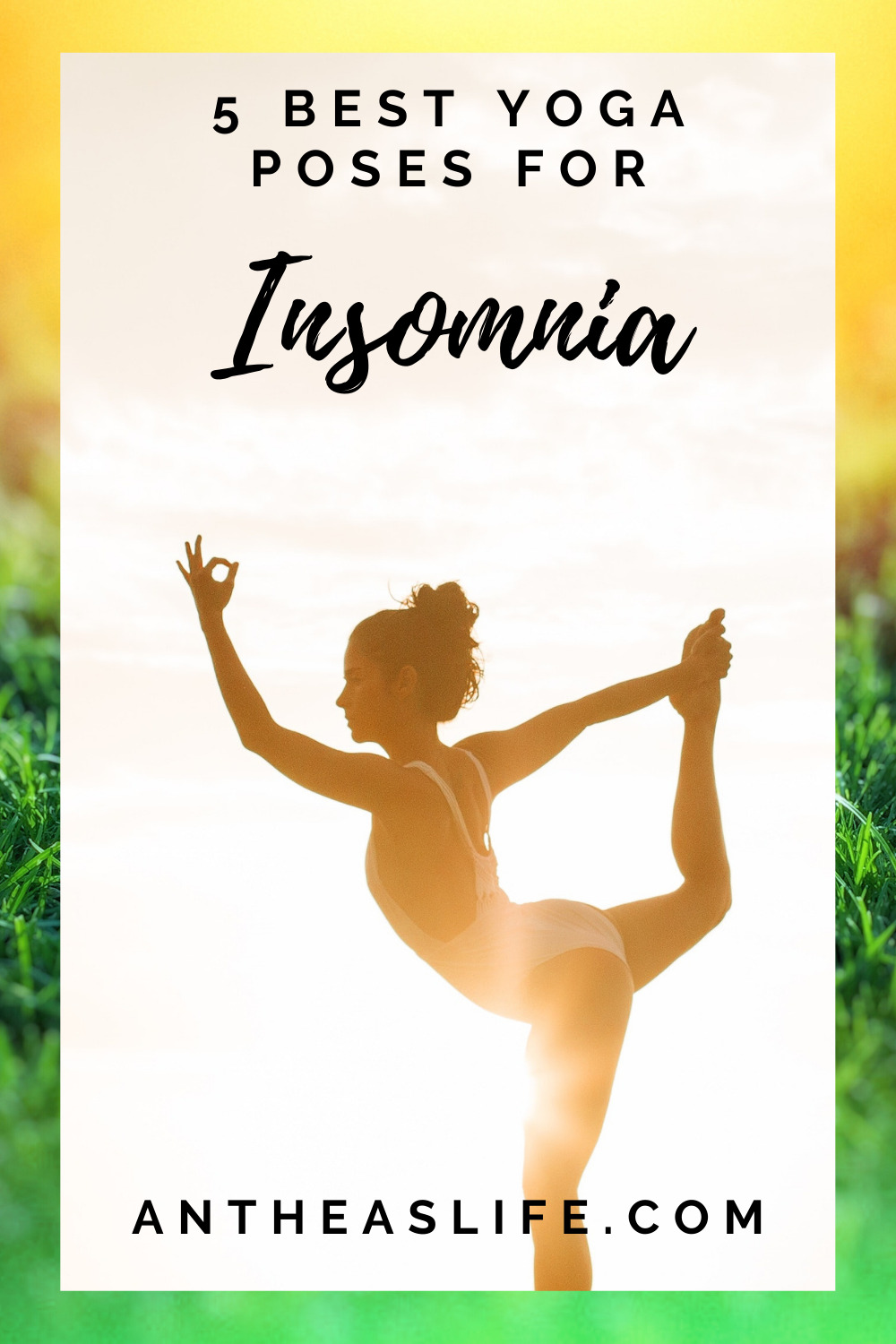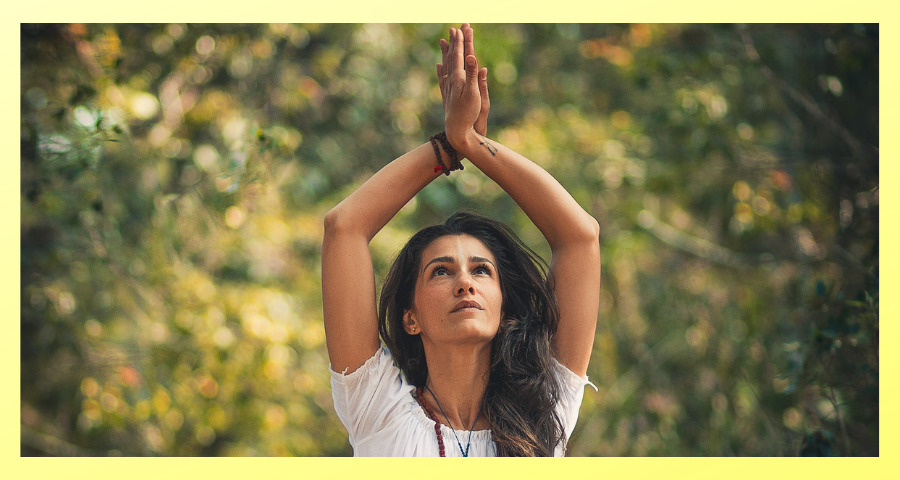Today, I will be sharing the 5 best yoga poses for insomnia. We all know that sleep is essential for overall wellbeing and health, but if you struggle with insomnia, getting your beauty sleep every night is easier said than done. However, these 5 best poses for insomnia might just resolve the issue. By incorporating these gentle yoga exercises to your nightly routine, you might just fall asleep faster and enjoy a good night’s rest.
The idea is to calm your nervous system and to allow your body to start winding down after a hard day at the office. The best way to induce better sleep with yoga is to do calm and restorative poses.

5 Best Yoga Poses For Insomnia
Forward Fold
Forward Fold is a mild inversion and it helps with activating the parasympathetic nervous system in the body. This system assists with slowing down the processes in the body to get rid of tension which subsequently promotes better sleep.
- Stand upright with your feet apart (hip-distance)
- Inhale deeply while raising your arms up and outwards until they gather above your head.
- While exhaling, contract the front of your thighs to pull your knees upwards and bend them forward from your waist.
- Start settling into the stretch whilst gently breathing in and grabbing opposite elbows. Your arms must hang directly underneath your head.
- If you are worried about balance, widen your stance.
- Now take ten to fifteen deep, slow breaths before gently rising to stand.
Puppy Pose
This pose is basically a modified child’s pose and stretches the spine, shoulders, and upper deck. It is beneficial for relieving stress and tension. The forehead that rests on the ground assists with stimulating your pituitary gland that is a primary source of melatonin. Your body needs melatonin in order for you to fall asleep.
- Stand on all fours on your yoga mat, allowing your hips to be stacked over the knees and your shoulders mounted over the wrists.
- Start walking your hands outwards in front of you without moving your heaps and keeping your elbows off the floor.
- As you are exhaling, tuck your toes under and start moving your behind around halfway towards your heels and drop your forehead gently to the mat.
- Breathe and keep a slight bend in your lower back region while pressing your hands downwards and stretching through your spine and arms.
- Remain in this position while taking five to ten breaths before walking backwards on your hands and to return to all fours.
Supine Twist
Supine Twists generally help with detoxing, releasing tension, and lowering back pain. Apart from that, particular reclining poses are thought-of to assist with relaxing your baroreflex, that reduces blood pressure. This in turn can help you to fall asleep and remain asleep.
- Lie on the floor on your back and while exhaling draw your knees into the chest.
- While exhaling, extend your arms outwards to your side at shoulder height and allow your knees to fall to the side, mounding your knees on top of one another. You can place a small cushion under the bottom knee for supporting the twist.
- While breathing into the twist, check that neither shoulder blade is lifting off the ground. If they are, try raising your legs a tad and place a cushion underneath to keep your shoulders pressed into the mat.
- Keep the pose for five deep breaths before lifting your legs backwards to your chest while exhaling and pressing your arms to assist with moving them, and then dropping them to the other side.
Child’s Pose
The child’s pose helps with stretching the ankles, thighs, and hips. It also inertly stretches the back torso and slightly relaxes the muscles in your front body. This pose helps with stimulating melatonin, reducing stress, and calming the mind.
- Stand on all fours and bring your big toes close together until they touch.
- Then widen your knees to hip width and sit backwards on your heels.
- While exhaling, lay the torso downwards between your thighs. You can widen your feet for a more comfortable stance or use a long, narrow cushion between the legs for supporting your torso.
- Once you are laying completely in a child’s pose, you can move your arms outwards in front of you and stretch as a follow-up pose after puppy pose. You can place your hands along the torso with your palms up.
- Remain in this pose for at least ten breaths. Once you rise from it, inhale at the same time and utilize your hands for support if needed.
Legs-Up-the-Wall Pose
This is another mild inversion pose, plus it is entirely passive, therefore assisting your body and brain to prepare for sleep.
- Move your yoga mat to an appropriate area next to the wall and sit down facing it.
- Lie down and lift your feet from the ground with your knees bent.
- While resting on the lower back, lift your feet and swing your torso lightly so that it is vertical to the wall. Position your sitting bones upwards against the base of the wall and legs up the wall.
- Start getting comfortable and move your torso while inching the lower back nearer to the wall if necessary. Extend your legs up against the wall (a folded blanket or cushion underneath the lower back can help you feel more comfortable).
- Rest your arms outwards to your sides at whichever angle feels right, palms up. Remain in the pose for as long as you prefer while breathing deeply and liberating your body from tension.
Conclusion
By doing these 5 yoga poses for insomnia before bedtime, you can reap instant results in the form of a restful night’s sleep. If you add them to your regular night time routine, the effects will amplify and your sleep patterns will continue to progress.
Sending you lots of light, love, and sleep-promoting vibes.
Anthea

